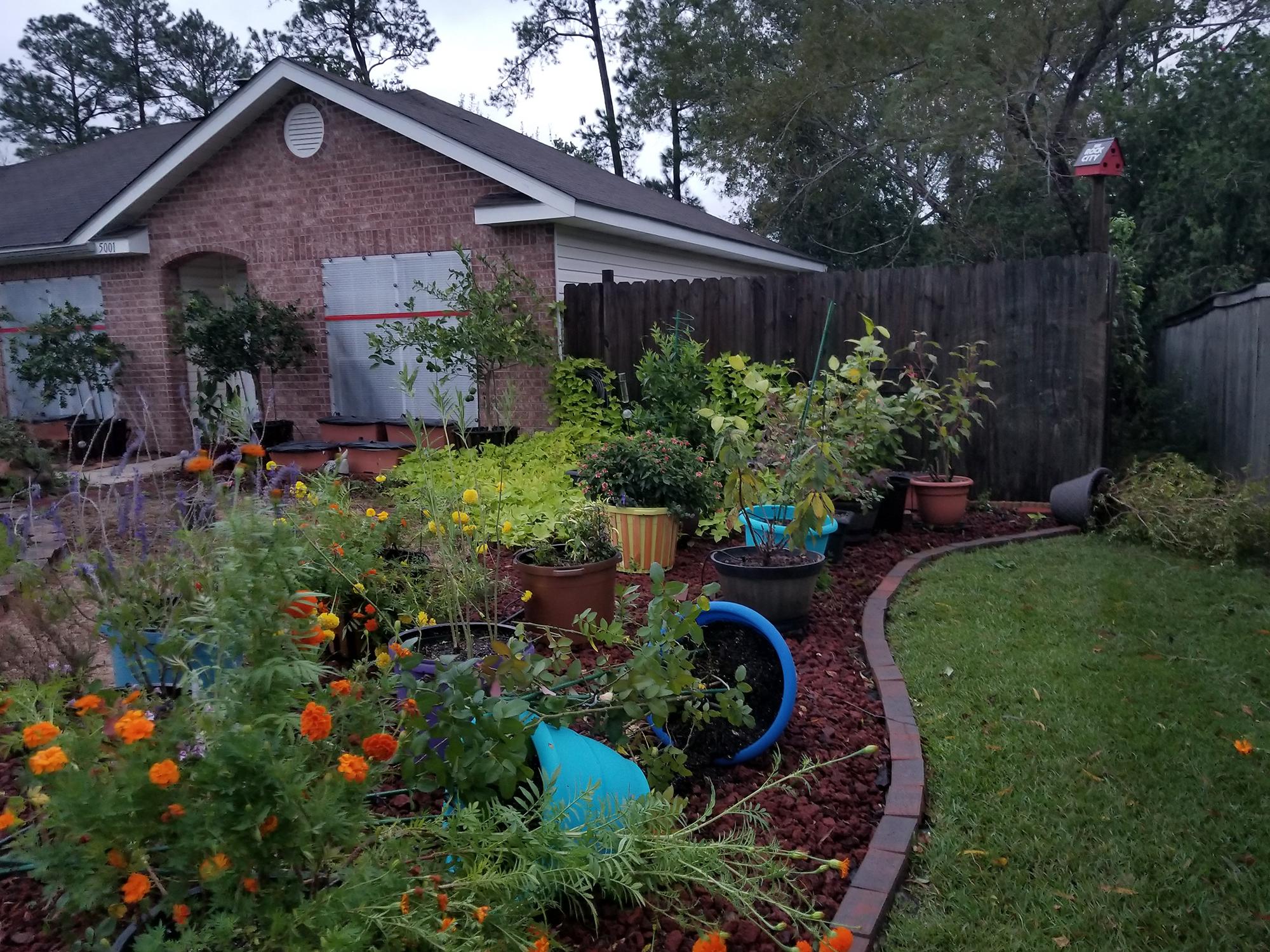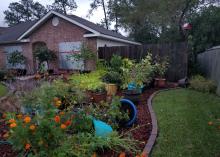Information Possibly Outdated
The information presented on this page was originally released on October 9, 2017. It may not be outdated, but please search our site for more current information. If you plan to quote or reference this information in a publication, please check with the Extension specialist or author before proceeding.
Last-minute preparations save gardens from storms
While Hurricane Nate was obviously not in the same class as Katrina, the last hurricane to hit the Mississippi Gulf Coast, it did provide gardeners a lesson in getting their landscapes ready before a storm.
I know it’s a bit backwards to wait until after the storm to make a list of tips to get your garden ready ahead of time. But this was the first hurricane I’ve experienced since moving to the Gulf Coast, and I’ve been thinking what I could have done better in advance.
Many of these tips may be obvious, but I witnessed many homeowners who were unaware or just unconcerned about protecting their landscapes, so here are my thoughts on last-minute storm preparation for the garden.
Look for items around the house and yard that could become projectiles in the high winds. Always put away lawn furniture and hanging baskets.
Move containers, because they will get rearranged. I have lots of 15- and 25-gallon containers that weigh well over 100 pounds. I left them alone, and only a couple were tipped over. I could have used an old nursery trick and laid the big containers on their sides.
Late Saturday night as Nate was making landfall, the wind was blowing hard directly out the east. I was amazed at how many hard thuds I heard when objects hit the side of the house. I was really happy that I put our polycarbonate storm panels up. I wondered where all the objects were coming from, as I had cleaned and picked up my landscape and garden. Darn those neighbors!
Pick any veggies out of the garden that are almost ready. If you happen to experience flooding, any remaining on the vine are absolutely inedible. Besides, I’ve been told that fried green tomatoes are quite delicious.
The vast majority of preparation revolves around pruning since our trees and shrubs would receive most of the landscape damage.
Sometimes trees will bend and not break, but lean instead. This is especially true for newly planted trees. I call trees newly planted if they have been in the ground for three years or less. I saw lots of leaning trees when I drove around Ocean Springs the morning after that I thought could be straightened and staked or braced back into place. Staking or bracing may be required for an extended period -- up to two years.
Remove any wires or bracing material that surrounds the trunk after the tree has become stable. Otherwise, the wires will girdle the trunk and inhibit future growth. Continue tree care after repairs are completed. They will need adequate soil moisture and mulch to conserve moisture as the dry fall months approach.
There’s going to be branch and limb damage that will impact the general health of the trees. Cut out broken, diseased and malformed branches, and give the tree a desirable shape.
Many homeowners really don’t know how to prune trees and shrubs correctly, and this makes them a little hesitant to prune at all. Through no fault of their own, they don’t really know where to start. In January 2015, we posted a video on the Mississippi State University Extension Service website that addresses pruning concerns. To see the video, visit https://goo.gl/zKptC9. Be sure to look at the portion that demonstrates the drop-cut method. At this point, if you’re unsure or have large, damaged limbs, contact a professional certified arborist.
I hope these landscape and garden tips will you get ready for the next storm we know is coming.




